Posts Tagged ‘veterinary care in Glen Carbon’
Dr. Olsen’s Pet Spotlight: The Leonberger Dog Breed
 At Olsen Veterinary Clinic, we celebrate all breeds, and today, we’re delighted to spotlight the Leonberger—a breed renowned for its gentle temperament, impressive size, and striking appearance. Whether you are a seasoned dog owner or considering adding a Leonberger to your family, understanding this breed’s unique characteristics is essential.
At Olsen Veterinary Clinic, we celebrate all breeds, and today, we’re delighted to spotlight the Leonberger—a breed renowned for its gentle temperament, impressive size, and striking appearance. Whether you are a seasoned dog owner or considering adding a Leonberger to your family, understanding this breed’s unique characteristics is essential.
Origin and History
The Leonberger hails from Leonberg, Germany, where Heinrich Essig, a dog breeder, sought to create a breed that embodied the grandeur and loyalty of a lion. By crossbreeding Saint Bernards, Newfoundlands, and Great Pyrenees, Essig succeeded in developing the Leonberger, which soon became a favorite among European royalty. The breed was officially recognized in the late 19th century and has since garnered a loyal following worldwide.
Physical Characteristics
Leonbergers are a sight to behold. Males typically weigh between 110 to 170 pounds, while females range from 90 to 140 pounds. They stand 26 to 32 inches tall at the shoulder, exuding an aura of strength and nobility. Their dense, water-resistant double coat comes in shades of lion-yellow, golden to red-brown, often with a black mask. Regular grooming is essential to maintain their majestic coat and reduce shedding.
Temperament and Behavior
Despite their imposing size, Leonbergers are known for their gentle and friendly nature. They are affectionate, loyal, and thrive on human companionship, making them excellent family pets. Their intelligence and eagerness to please make them highly trainable, although early socialization and obedience training are crucial. Leonbergers are known for their calm demeanor, but they also possess a playful side and enjoy various activities, from hiking to swimming.
Health and Lifespan
Leonbergers are generally healthy, with a lifespan of 8 to 10 years. However, like all breeds, they are prone to specific health issues, including hip dysplasia, elbow dysplasia, and certain types of cancer. Regular veterinary check-ups, a balanced diet, and appropriate exercise are vital to ensuring their well-being. At Olsen Veterinary Clinic, we emphasize preventative care and offer tailored health plans to keep your Leonberger in optimal condition.
Exercise and Activity
Given their size, Leonbergers require regular exercise to maintain their physical and mental health. Daily walks, play sessions, and opportunities to run in a secure area are beneficial. They excel in activities like agility, obedience, and even water rescue, thanks to their strong swimming abilities. Engaging your Leonberger in diverse activities will keep them happy and prevent boredom-related behaviors.
Grooming Needs
Leonbergers have a thick, double coat that requires consistent grooming. Weekly brushing helps prevent mats and tangles, and more frequent grooming may be necessary during shedding seasons. Bathing should be done as needed, and regular checks of their ears, teeth, and nails are essential parts of their grooming routine. At Olsen Veterinary Clinic, we offer comprehensive grooming services to help keep your Leonberger looking and feeling their best.
Leonbergers and Families
Leonbergers are known for their exceptional compatibility with families. They are patient and gentle with children, often forming strong bonds with them. Their protective yet non-aggressive nature makes them excellent watchdogs without being overly territorial. However, due to their size, supervision around small children is recommended to prevent accidental knock-overs.
The Leonberger is a remarkable breed that combines beauty, strength, and a loving temperament. They make wonderful companions for those who can accommodate their size and grooming needs. At Olsen Veterinary Clinic, we are passionate about providing the best care for your Leonberger, ensuring they lead a healthy, happy life. Whether you’re a current Leonberger owner or considering bringing one into your home, our team is here to support you with expert advice and services.
For more information or to schedule a consultation, please contact Olsen Veterinary Clinic. We look forward to helping you and your Leonberger thrive together.
Unveiling the Smile: Celebrating Pet Dental Health
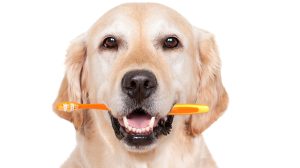 While we often focus on keeping our pets healthy through diet and exercise, dental health tends to be overlooked. However, just like us, our pets need proper dental care to maintain overall well-being. Let’s delve into the importance of dental hygiene for our furry friends and discover how we can ensure they flash those pearly whites for years to come.
While we often focus on keeping our pets healthy through diet and exercise, dental health tends to be overlooked. However, just like us, our pets need proper dental care to maintain overall well-being. Let’s delve into the importance of dental hygiene for our furry friends and discover how we can ensure they flash those pearly whites for years to come.
Why Pet Dental Health Matters
Oral health is a vital aspect of your pet’s overall health and can affect their quality of life in significant ways. Dental issues in pets can lead to pain, discomfort, difficulty eating, and even more severe health problems if left untreated. From plaque and tartar buildup to gum disease and tooth decay, the consequences of neglecting dental care can be serious. Additionally, bacteria from dental problems can enter the bloodstream and potentially affect other organs, such as the heart, liver, and kidneys, making regular dental care crucial for your pet’s longevity.
At-Home Dental Hygiene Tips:
Fortunately, there are several simple yet effective ways to promote good dental hygiene for your furry friends right at home:
- Brushing: Just like humans, pets benefit from regular brushing. Use a pet-specific toothbrush and toothpaste to gently clean their teeth. Start slowly and gradually increase the duration of brushing sessions as your pet becomes accustomed to the routine.
- Dental Chews and Toys: Provide your pet with dental chews and toys designed to promote oral health. These products help reduce plaque and tartar buildup by encouraging chewing and saliva production.
- Healthy Diet: Feed your pet a balanced diet consisting of high-quality food and treats. Avoid giving them sugary or sticky treats, as these can contribute to dental problems.
- Regular Inspections: Take the time to regularly inspect your pet’s mouth for signs of dental issues such as bad breath, swollen gums, or discolored teeth. Early detection can prevent the progression of dental disease.
The Role of Professional Dental Cleanings
While at-home care is essential, professional dental cleanings are also necessary to maintain optimal oral health for your pet. Veterinary professionals have the expertise and specialized equipment to perform thorough cleanings and address any underlying dental issues. During a dental cleaning, your pet will undergo scaling to remove plaque and tartar, polishing to smooth the tooth surfaces, and in some cases, extractions or other necessary treatments. Your veterinarian may also recommend dental X-rays to assess the health of your pet’s teeth and gums below the surface.
Let’s pledge to prioritize our furry companions’ oral health and well-being. By incorporating at-home dental hygiene practices and scheduling regular professional cleanings, we can help our pets maintain healthy smiles and lead happier, healthier lives. Remember, a little care goes a long way in ensuring that your pet’s teeth shine as bright as their personalities! Here at Olsen Veterinary Clinic, we are happy to get you on a regular schedule to ensure your pet’s dental health is strong. Contact our office today!
Nutritional Tips for Pets
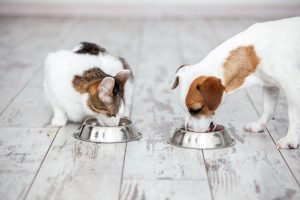 Providing proper nutrition for pets is crucial for the health and well-being of your pets. Here are some general nutritional tips to ensure your pets receive the necessary nutrients.
Providing proper nutrition for pets is crucial for the health and well-being of your pets. Here are some general nutritional tips to ensure your pets receive the necessary nutrients.
- Consult with a Veterinarian: Before making any significant changes to your pet’s diet, consult with a veterinarian. They can provide personalized advice based on your pet’s breed, age, health status and specific needs.
- Balanced Diet: Ensure your pet’s diet is well-balanced and meets their nutritional requirements. This typically includes a mix of proteins, carbohydrates, fats, vitamins, and minerals.
- Quality Commercial Pet Food: Choose High-quality commercial pet food that is appropriate for your pet’s life stage (e.g., puppy, adult, senior). Looke for brands that list a specific meat source as the first ingredient and meet the standards set by relevant authorities.
- Portion Control: Over feeding can lead to obesity and other health issues. Follow the recommended portion sizes on the pet food packaging and adjust based on your pet’s age, activity level, and overall health.
- Fresh Water Ensure your pet has access to fresh, clean water at all times. Hydration is essential for overall health.
- Avoid Human Foods: Many human foods can be harmful to pets. Avoid feeding them chocolate, caffeine, alcohol, onions, garlic, grapes, raisins, and certain artificial sweeteners like Xylitol.
- Monitor Treats: While treats can be a part of your pet’s diet; be mindful of the quality. Treats should not make up more than 10% of your pet’s daily calorie intake.
- Regular Exercise: Combine a balanced diet with regular exercise to maintain a healthy weight and promote overall well-being.
- Special Dietary Needs: Some pets may have specific dietary needs due to allergies, sensitivities, or medical conditions. If your pet requires a special diet, work closely with your veterinarian to find a suitable option.
- Regular Checkups: Schedule regular veterinary check-ups to monitor your pet’s overall health, weight, and nutritional needs. Adjust their diet as necessary based on any changes in health or lifestyle.
- Transition Gradually: If you are changing your pet’s diet, do so gradually over a week to allow their digestive system to adjust. Mix the new food with the old food in increasing proportions.
Remember that individual pets may have unique nutritional requirements, so it is essential to tailor their diet to their specific needs with guidance from a veterinarian. Here at Olsen Veterinary Clinic, we are committed to the health of your pet. Please contact us at any time with questions.
The Importance of Regular Veterinary Check-ups
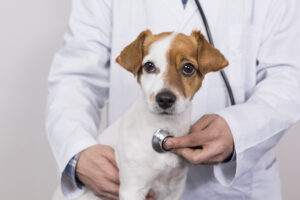 Regular veterinary check-ups are crucial for maintaining the overall health and well-being of your pets. These routine visits play a key role in preventative care and early detection of health issues. Here are some reasons why regular veterinary check-ups are important.
Regular veterinary check-ups are crucial for maintaining the overall health and well-being of your pets. These routine visits play a key role in preventative care and early detection of health issues. Here are some reasons why regular veterinary check-ups are important.
Preventative Care:
Regular check-ups allow veterinarians to administer vaccinations, parasite control, and dental care. Preventative measure can help protect your pet from various illnesses, ensuring they lead a healthier longer life.
Early Detection of Health Issues:
Pets, like humans, can develop health issues that may not be immediately apparent. Regular check-ups enable veterinarians to detect potential health problems early, often before symptoms become severe. Early detection can significantly improve the prognosis and treatment outcomes.
Disease Screening:
Veterinary check-ups may include screenings and tests for common pet diseases. These screenings can help identify conditions such as diabetes, kidney disease, and certain types of cancer in their early stages, allowing for timely intervention.
Dental Health:
Dental issues are common in pets, and they can lead to various health problems if left untreated. Regular veterinary visits often include dental examinations and cleanings, promoting good oral health and preventing dental diseases.
Nutritional Guidance:
Veterinarians can provide guidance on proper nutrition based on your pet’s age, breed, and health condition. A well-balanced diet is essential for maintaining your pet’s overall health and preventing nutrition-related issues.
Behavioral Assessment:
Veterinarians can assess your pet’s behavior during routine visits. Changes in behavior may be indicative of underlying health issues and addressing them early can prevent further complications.
Weight Management:
Maintaining a healthy weight is crucial for your pet’s well-being. Regular check-ups allow veterinarians to monitor your pet’s weight and provide guidance on nutrition and exercise to prevent obesity-related health issues.
Senior Pet Care:
As pets age, their healthcare needs may change. Regular check-ups become even more critical for senior pets to monitor and address age-related conditions, such as arthritis, dental problems, and organ dysfunction.
Client Education:
Veterinary visits are an opportunity for pet owners to learn about their pet’s specific needs, behaviors, and potential health risks. Education from veterinarians empowers pet owners to provide the best care possible.
In summary, regular veterinary check-ups are essential for preventative care, early detection of health issues, and ensuring that your pets lead healthy and happy lives. Establishing a consistent schedule of veterinary visits can contribute significantly to the overall well-being of your beloved companions. Contact our office today to schedule yours or if you have any questions.
10 Pet Health Myths Debunked
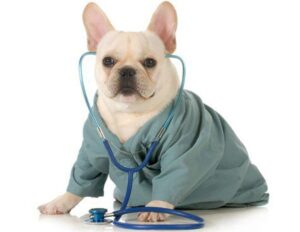 There are several pet health myths that circulate widely. It’s important to separate fact from fiction for the well-being of our furry friends. Here are some common pet health myths debunked.
There are several pet health myths that circulate widely. It’s important to separate fact from fiction for the well-being of our furry friends. Here are some common pet health myths debunked.
1. Myth: A Warm, Dry Nose Indicates Illness
Debunked: A warm, dry nose does not necessarily mean a pet that is sick. Dogs and cats can have varying nose temperatures throughout the day. Factors like weather, hydration, and activity levels play a role.
2. Myth: Cats Always Land on Their Feet
Debunked: While cats have a remarkable ability to right themselves during a fall, it is not foolproof. Cats can still suffer injuries if they fall from a significant height.
3. Myth: Milk Is Good for All Cats
Debunked: Many adult cats are lactose intolerant and feeding them milk can lead to digestive upset and diarrhea. It is best to provide fresh water as their primary source of hydration.
4. Myth: Garlic and Onions are Safe for Dogs and Cats
Debunked: Garlic and onions contain compounds that can be toxic to pets and cause damage to their red blood cells. It’s advisable to keep these foods away from pets.
5. Myth: All Humans Medications Can be Given to Pets
Debunked: Many human medications are toxic to pets. Never give your pet any medication without consulting a veterinarian, as the wrong dosage or type can be harmful and even fatal.
6. Myth: Dogs Will Only Eat Grass if They’re Sick
Debunked: Some dogs eat grass simply because they like the taste or texture. While it’s not entirely clear why dogs eat grass, it’s not always a sign of illness.
7. Myth: Annual Vaccinations Are Always Necessary
Debunked: Some Vaccination needs may vary based on the pet’s health, lifestyle, and age. Some vaccines provide long-lasting immunity, and over-vaccination can have risks. Consult with your vet to create an appropriate vaccination schedule
8. Myth: Pet’s Age Seven Years for Every Human Year
Debunked: The rate at which pets age can vary by species and size. For example, small dog breeds tend to live longer than larger breeds. The one-size fits all calculation is not accurate.
9. Myth: Dry Cat Food Helps Clean Teeth
Debunked: While some dental diets may promote oral health. Relying solely on dry kibble is not a substitute for regular dental care. Brushing your cat’s teeth and providing dental treats can be more effective.
10. Myth: Scratching Furniture Means Cats are Being Destructive
Debunked: Scratching is a natural behavior for cats. Providing appropriate scratching posts and regularly trimming their nails can help redirect this behavior without resorting to punishment
Always give us a call for accurate information and advice tailored to your pet’s specific needs.
5 Ways to Keep Your Dog Safe in the Snow
 Keeping a dog safe in the snow is important, as cold weather can pose various risks to their health and well-being. Here are five ways to ensure your dog stays safe in snowy conditions.
Keeping a dog safe in the snow is important, as cold weather can pose various risks to their health and well-being. Here are five ways to ensure your dog stays safe in snowy conditions.
-
- Ensure Adequate Shelter: Ensure that your dog has access to a warm and dry shelter, such as a well-insulated doghouse or a heated indoor space. Limit the time your dog spends outdoors in extreme cold weather, especially during snowstorms.
- Use Protective Gear: Invest in appropriate winter gear for your dog, such as a waterproof and insulated coat. Booties can protect their paws from ice, snow, and harmful chemicals like de-icing salts. Make sure the gear fits properly and doesn’t cause any discomfort.
- Monitor Paw Health: Snow and ice can accumulate between the paw pads, leading to discomfort or injuries. Regularly check your dog’s paws for ice balls, cuts, or signs of frostbite. Wipe their paws with a damp cloth to remove any salt or chemicals.
- Keep Them Hydrated: Cold weather can be dehydrating and dogs may be less inclined to drink water when it is cold. Ensure that your dog has access to fresh water at all times. Dehydration can contribute to health issues, including susceptibility to hypothermia.
- Adjust Diet and Monitor Weight: Dogs my burn more calories in cold weather to stay warm. Adjust their diet accordingly and monitor their weight. A well-nourished dog is better equipped to handle the challenges of cold weather.
Remember that individual dogs have different tolerance levels for cold weather, and factors such as breed, age, and health should be taken into consideration. Always obeserve you dog for signs of discomfort or stress, and consult with your veterinarian if you have specific concerns about your dog’s well-being in snowy conditions.
If at any time you have concerns or questions, do not hesitate to contact our office. Have a safe and fun winter with your pup!
Is My Cat Sleeping Too Much? How to Know the Difference Between a Cat Nap and a Problem
 Cats are known for sleeping a lot, and it’s perfectly normal for them to spend a significant portion of their day napping. On average, cats can sleep anywhere from 12 to 16 hours a day and some cats may sleep even more, especially if they are very young or very old. However, if you’re concerned that your cat is sleeping too much and it might be a sign of a problem, here are some things to consider:
Cats are known for sleeping a lot, and it’s perfectly normal for them to spend a significant portion of their day napping. On average, cats can sleep anywhere from 12 to 16 hours a day and some cats may sleep even more, especially if they are very young or very old. However, if you’re concerned that your cat is sleeping too much and it might be a sign of a problem, here are some things to consider:
- Changes in Behavior: Pay attention to any noticelable changes in your cat’s behavior. If your cat is typically active, playful, and social when awake but suddenly becomes lethargic or withdrawn, it could be a sign of an underlying issue.
- Appetite and Thirst: Monitor your cat’s eating and drinking habits. A significant decrease in appetite or a noticeable increase in thirst can be indicators of a health problem.
- Weight Changes: Sudden weight loss or gain can be a sign of various health issues, so keep an eye on your cat’s weight.
- Bathroom Habits: Changes in litter box habits, such as straining to urinate, diarrhea, or constipation, may indicate a problem. Also, observe the color and consistency of your cat’s urine and feces.
- Physical Symptoms: Look for physical signs of distress, such as vomiting, coughing, sneezing, limping, or any obvious discomfort or pain. These can be clues that something is amiss.
- Age and Health History: The age and overall health of your cat can also influence their sleeping patterns. Senior cats may sleep more than younger cats. Consult with your veterinarian to discuss age-related changes in your cat’s behavior.
- Environmental Factors: Ensure your cat’s environment is comfortable and stress-free. Changes in your cat’s living situation, such as moving to a new home, introducing a new pet, or household routine, can affect their behavior and sleep patterns.
- Regular Veterinary Check-Ups: Regular veterinary check-ups are essential for maintaining your cat’s health. If you’re concerned about your cat’s excessive sleeping or any other changes, consult your veterinarian. They can perform a physical examination, run diagnostic tests, and provide guidance of your cat’s specific needs.
Obviously, you know your cat better than anyone. So if you have any concerns or questions about your fur baby, don’t hesitate to contact our office today to set up a visit.
12 Tips for Safe Pet Costumes This Halloween
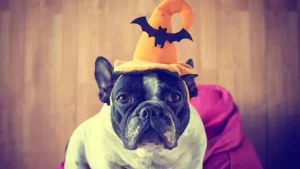 Dressing up your pet in a Halloween costume can be a fun and adorable way to celebrate the holiday, but it is important to prioritze their safety and comfort. Here are some tips for ensuring your pet’s Halloween costume is safe:
Dressing up your pet in a Halloween costume can be a fun and adorable way to celebrate the holiday, but it is important to prioritze their safety and comfort. Here are some tips for ensuring your pet’s Halloween costume is safe:
- Choose a comfortable costume: Make sure the costume fits your pet properly and doesn’t restrict their movement or breathing. Avoid costumes with tight elastic bands or constrictive straps that could cause discomfort.
- Consider your pet’s personality: Some pets may be more tolerant of wearing costumes than others. If your pet seems stressed or uncomfortable in a costume, it’s best to skip it and find other ways to include them in the festivities.
- Opt for pet-friendly materials: Look for costumes made from soft breathable materials that won’t irritate your pet’s skin or cause allergies. Avoid costumes with small parts that your pet could chew on or swallow.
- Ensure good visibility: Make sure your pet can see clearly while wearing the costume. Avoid costumes that cover their eyes or obstruct their vision, as this can be dangerous.
- Check for choking hazards: Remove any small or dangling parts that your pet could chew on or swallow. Those could pose a choking hazard.
- Avoid costumes with hoods or masks: Hoods or masks can restrict your pet’s breathing and make it difficult for them to see or hear. Opt for costumes that leave their face uncovered.
- Practice wearing the costume: If your pet is not used to wearing clothes, practice with the costume in advance to Halloween. This can help them get accustomed to it and reduce stress.
- Monitor your pet: Keep a close eye on your pet while they are wearing the costume especially if they are wearing it for the first time. Watch for signs of discomfort.
- Don’t force it: If your pet clearly doesn’t want to wear the costume or seems distressed, respect their feelings and remove it immediatlely. It’s not worth causing stress or discomfort to your furry friend.
- Plan comfort breaks: If your pet will be wearing the costume for an extended period, make sure they have regular breaks to stretch, eat, drink and use the bathroom.
- Be mindful of the environment: Keep your pet’s safety in mind when you take them out in public wearing a costume. Avoid busy streets or crowded areas where your pet might get scared or owerwhelmed.
- Capture the moment: Once your pet is comfortably dressed up, take some adorable photos to cherish the memory. Share them with friends and family to spread the Halloween spirit! Remember that not all pets will enjoy wearing costumes, so always prioritize their well-being and comfort. If your pet appears distressed or unhappy in a costume, it’s best to remove it and find other ways to include them in your Halloween festivities.
We at Olsen Veterinary Clinic are always here if you have any questions about your pet, so feel free to contact us at any time. We wish you and your pet a safe and Happy Halloween!
What Is Your Cat Trying to Say? How to Decipher Your Cat’s Body Language
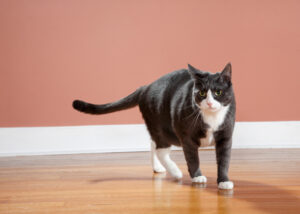 Have you ever talked to animals? Have you ever wanted to converse with your pets’ and interpret their body language ala Dr. Dolittle? Our pets tend to be very important parts of our lives so interpreting their body language can be important to us.
Have you ever talked to animals? Have you ever wanted to converse with your pets’ and interpret their body language ala Dr. Dolittle? Our pets tend to be very important parts of our lives so interpreting their body language can be important to us.
Tail Position: A cat’s tail position can convey various emotions. A relaxed, straight tail usually means your cat is content. A slightly curved tail might indicate curiosity. A puffed-up tail can indicate fear or agitation, while a flicking tail could mean excitement or annoyance.
Ears: Pay attention to your cat’s ears. Forward-facing ears generally indicate curiosity or interest, whe flattened ears suggest fear, anger, or irritation.
Purring: Purring is often a sign of contentment and happiness, though cats can also purr when they’re anxious or in pain.
Body Posture: A relaxed and stretched-out posture signifies comfort and relaxation. An arched back could indicate fear or aggression, while a crouched stance may mean your cat is ready to play or is feeling defensive.
Eye contact: Direct eye contact can be seen as a challenge or a sign of aggression in the cat world. Slow blinking from your cat is ofter a sign of affection and trust.
Kneading: Cats may knead with their paws, pressing them against you or soft surfaces. This behavior is oftern associated with contentment and comfort, as it is reminiscent of their kittenhood when they kneaded their mother’s belly to stimulate milk flow.
Grooming: Grooming is a common self-soothing behavior in cats. If your cat is grooming itself after a stressful event, it could be a sign that it’s trying to calm down.
Remember that individual cats may have different personalities and quirks, so it is essential to observe your cat’s behavior over time to better understand its unique body language. Additionally, context plays a significant role in interpreting cat body language. Consider the situation and overall environment to make a more accurate interpretation of your cat’s emotions and intentions.
If you have any questions about your pet’s quirks or body language please call us at 618-656-5868 or contact us here. We are here to help.
National Mutt Day: Here Are Some Ways To Celebrate
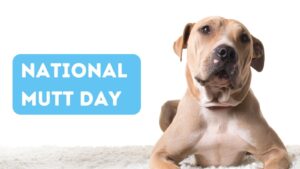 Question of the month. What do Higgins ( the dog from the film Benji) , Laika ( the Soviet space dog), Pluto (Mickey Mouses’s pet dog) and Clifford the Big Red Dog all have in common? Believe it or not, they are all famous mixed-breed dogs and on July 31, it is National Mutt Day.
Question of the month. What do Higgins ( the dog from the film Benji) , Laika ( the Soviet space dog), Pluto (Mickey Mouses’s pet dog) and Clifford the Big Red Dog all have in common? Believe it or not, they are all famous mixed-breed dogs and on July 31, it is National Mutt Day.
National Mutt Day, also known as National Mixed Breed Dog Day, is a day dedicated to celebrating mixed breed dogs and raising awareness about their value as pets. It is observed on two different dates throughout the year: July 31st and December 2nd.
On National Mutt Day, people are encouraged to adoopt mixed breed dogs from animal shelters and rescue organizations rather than buying from breeders. The day aims to promote the adoption and well-being of mixed breed dogs and to combat the stigma and misconceptions surrounding them.
Mixed breed dogs, often referred to as mutts, are dogs that have a combination of different breeds in their ancestry. They can exhibit a wide range of characteristics, both in terms of appearance and temperament. Adopting a mutt can be a rewarding experience, as they often have unique and diverse traits.
If you are interested in celebrating National Mutt Day, you can consider doing the following:
- Visit your local animal shelter or rescue organization: Spend some time with the mixed breed dogs available for adoption, and consider bringing one into your family if it is the right fit for you.
- Volunteer at an animal shelter: Offer your time and help by volunteering at a local shelter. You can assist with walking the dogs, cleaning their encolosures, or providing general care.
- Spread awareness: Use your social media platforms to share information about National Mutt Day and the benefits of adopting mixed breed dogs. Encourage others to consider adopting a mutt or donate to local animal welfare organinzations.
- Organize an event: Consider organizing an event in your community that promotes adoption and celebrates mixed breed dogs. This could include activities such as doggie playdates, training sessions, or informational sessions about responsible pet ownership.
Here at Olsen Veterinary Clinic, we take pride in taking care of EVERY animal, no matter the breed or type. If you have any questions about your pet, don’t hesitate to contact our office today!
